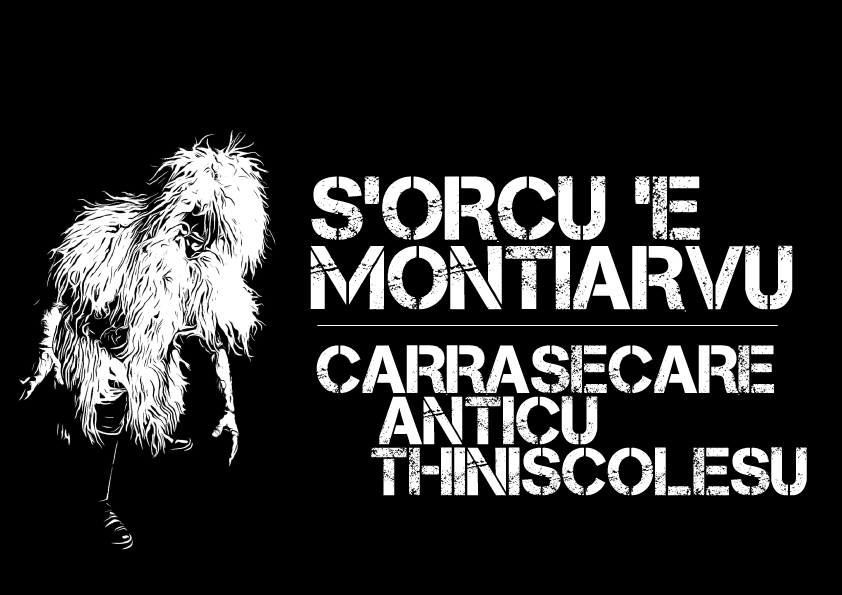From a 1967 book by Pietrina Moretti titled “The Bear Mask in Sardinian Carnival,” published by Leo S. Olschki Publishing House, based on the research of the scholar and journalist Giuseppe Della Maria, who studied the Sardinian Carnival and its masks in the late 1950s, we find a note regarding the presence of the S’orcu mask in the rituals of Siniscola’s Su Carrasecare (in italian)

“In Mamoiada (Nuoro), the bear was covered with various skins, tied with chains, and beaten with ‘su nevriu’ (ox sinew). Originally, it was performed by the ‘Mamutones,’ who, along with the ‘issocadores’ as their escorts, engaged in the spectacle. The ‘soca’ (loop) throwers reached either the bear or the spectators, who had to pay a ransom in liters of wine poured into a special leather bag (udri).
According to what some elders have told me, the bear’s sudden and aggressive assault on the spectators often led to unfortunate incidents that increasingly restricted the presence of this mask until its disappearance. This supports the interpretation of the procession, highlighting the parallelism of certain elements common to the scheme.
As for Fonni, we will add that the bear was accompanied by ‘su buttudos,’ men with demonic cork masks and attire, who wore belts and shoulder straps adorned with numerous ‘pipiolus’ (small bells) that symbolize underground spirits, similar to the ‘mamuttones,’ distinguished by their different pace.
In Orgosolo and Aritzo (Nuoro), participants disguised themselves in wild boar and mouflon skins. The bear was tethered to a sturdy man who held it firmly, encouraging it to dance and frighten the spectators.
The same occurred in Desulo (Nuoro), where numerous ‘campaneddas’ and ‘sonazzas’ (bells and rattles) accompanied the bear, and they were equipped with a leather ‘soca.’
In Siniscola, within the Baronia (Nuoro), a region along the eastern coast, most frequently targeted by these raids, the characteristic mask for Fat Tuesday was ‘su tintinnaru’ due to its considerable number of various-sized bells that jingled with the slightest movement. The person was wrapped in skins, painted in black and red, just like the men following him. The mask was tied with a thick rope, and the one holding it carried ‘foette,’ a whip made of ox sinew, which was used to strike the mask. When invited to dance with the phrase ‘comu acche un’ (now do a dance!), while a chorus sang playful songs, the mask hesitated and was whipped. During breaks, the men shouted loudly, simulating the pains of childbirth and inviting the young girls to intentionally touch conspicuous bundles of sticks.
